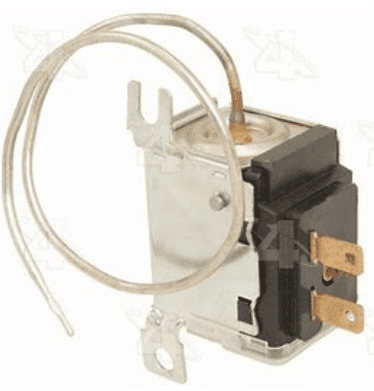A Sure Sign Of A Restriction (Part Three)
By Richard Hawkins, MACS Technical Writer
This is part three in a series of articles about restrictions in A/C systems. If you have not read the two previous articles, they can be found at: A Sure Sign of Restriction and A Sure Sign of Restriction (Cont.)
The previous article ended with the following: Check back in 2 weeks and we will discuss how a restriction such as this would cause orifice tube systems to behave. To follow up on that, it first needs to be noted that “systems” is plural. Not all orifice tube “systems” will behave the same. This is because of design differences. The major design differences are as follows:
1. Fixed or variable displacement compressor. (If equipped with a variable displacement compressor, it will be a continuous run system. If equipped with a fixed displacement compressor, it will be a cycling system.)
2. If equipped with a fixed displacement compressor (cycling system), the system may be pressure controlled or temperature controlled. A pressure controlled system would use a clutch cycling switch such as those commonly found on accumulators. Please see picture #1. Temperature controlled systems will use either a mechanical thermostatic cycling switch like those used on older orifice tube systems or an evaporator temperature sensor such as might be found on mid 2000s Dodge Ram trucks. Please see pictures #2 and #3.



I’ve often asked the following question when conducting A/C clinics: What condition will an extremely low charge or restricted orifice tube cause with an orifice tube system? Almost immediately someone will answer: Rapid cycling. That is correct with a large majority of orifice tube systems, but not all. That is because that would only apply to a cycling system and even if it was a cycling system it would only cycle if it was pressure controlled (as a large percentage of cycling orifice tube systems are).
With an extremely low charge, the evaporator is starved for refrigerant. If the orifice tube is restricted approximately the same amount as the expansion valve on the vehicle in the previous articles, that will cause the evaporator to be starved for refrigerant. The result will be a rapid drop in low side pressure when the compressor turns on.
If the system is equipped with a fixed displacement compressor and a pressure controlled clutch cycling switch then it will indeed rapid cycle as the low side pressure will drop rapidly to the cycle-off point (probably around 23PSI to 25PSI). Then when the compressor turns off, the low side pressure will rapidly climb to the cycle-on pressure (about 40PSI to 44PSI) because the evaporator is not very cold. This process will repeat over and over, unless the system is equipped with a computer control to detect the condition and shut the system down.
Then when the compressor turns off, the low side pressure will rapidly climb to the cycle-on pressure (about 40PSI to 44PSI) because the evaporator is not very cold.
If the system is equipped with a fixed displacement compressor and an evaporator temperature sensor, then it will behave very much like an expansion valve system with a fixed displacement compressor. The low side will pull down into a vacuum, the high side pressure will be lower than normal (maybe only 100 PSI to 125PSI) and there will be very little cooling because there is very little refrigerant in the evaporator.
If the system is equipped with a variable displacement compressor, the compressor will throttle back to a low displacement when the low side pressure gets into a range of about 28PSI to 32PSI. The high side pressure will be lower than normal (maybe only 100PSI to 125PSI) and there will be very little cooling taking place because there is very little refrigerant in the evaporator. Note: This is for a compressor that has a mechanical control valve (aka pressure control valve). I’m not aware of any orifice tube systems that use variable displacement compressors with electronic control valves.
Leave a Reply